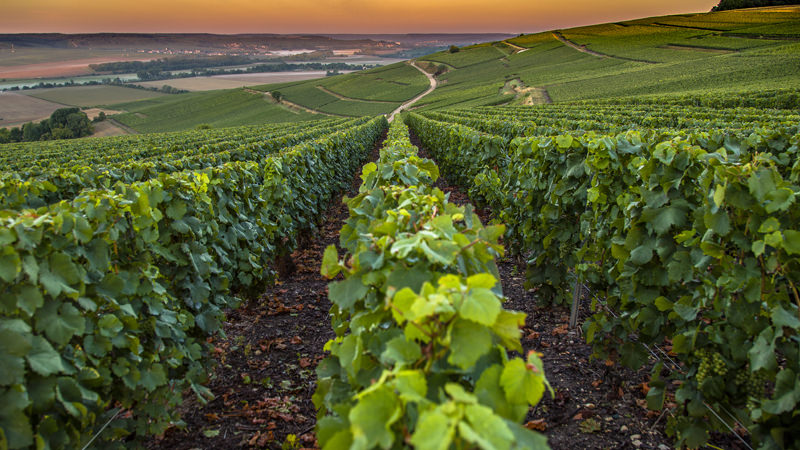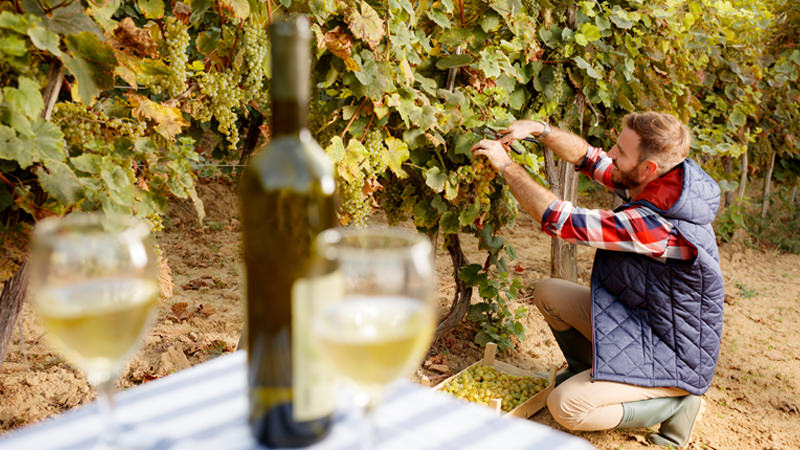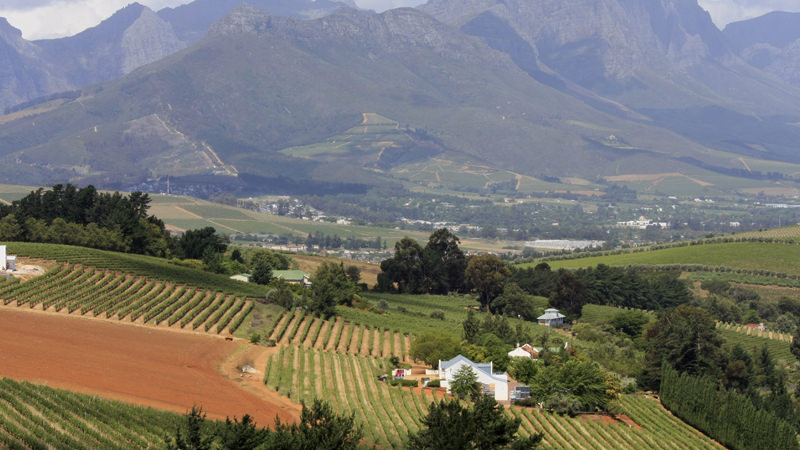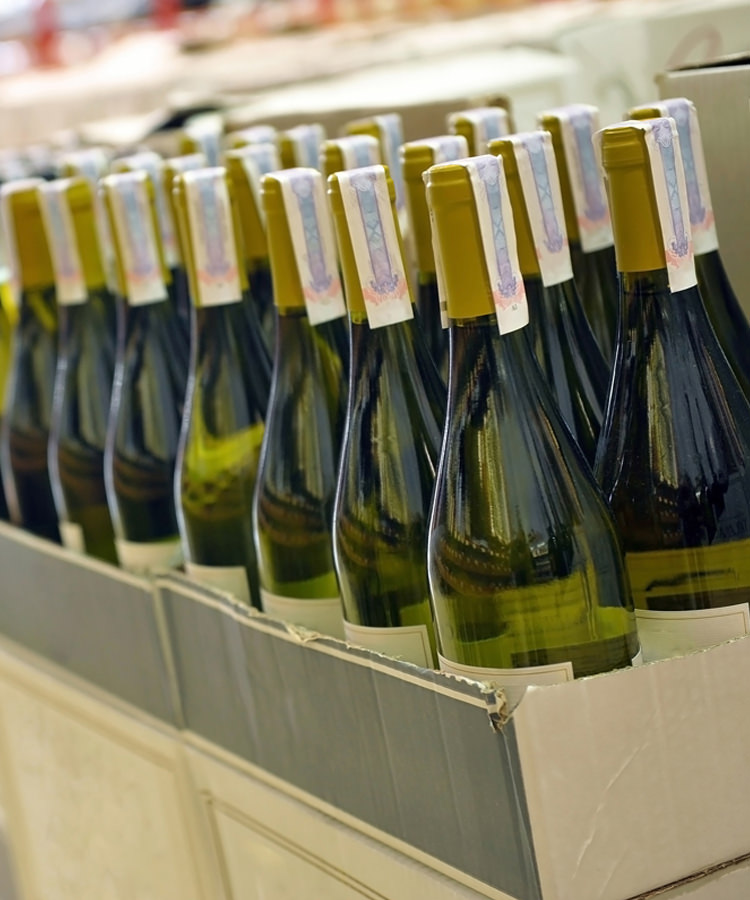Ever look at a few wine labels and find your eyes swimming in what looks like code? You’re not the only one.
Among the myriad pieces of intel crunched onto each label (producer, grape variety) is the wine’s appellation, usually designated by a two-to-four-letter acronym. Written as abbreviations such as AVA, AOP, and DOC, appellations are country-specific criteria classifying the regions in and processes with which wines are made. For drinkers, they are an invaluable tool for deciphering what’s in your glass, who made it, and how it got there.
Check out our regional appellation guide for a country-by-country breakdown of what these acronyms mean in 10 wine-producing nations worldwide. From France and Italy, to Argentina and Germany, this is your cheat sheet to unlocking a world of wine.
France
AOP: Appellation d’Origine Protégée
Formerly AOC, this is the superior and strictest classification for French wine, with regulated geographic and quality standards. Examples include Sancerre, Graves, and Hermitage.
IGP: Indication Géographique Protégée
Formerly VDP, this classification presents less strict rules than AOP regulations, such as higher yields, broader geographic limits, and additional grape varieties permitted in blends, giving winemakers more freedom in the winemaking process. Examples include Pays d’Oc, Val de Loire, and Pays d’Hérault.
VDF: Vin de France
Formerly known as Vin de Table, VDF presents the fewest restrictions in France’s wine classification system. Grape varieties may be mentioned on the label, though regional or geographic indications may not.

Italy
DOCG: Denominazione di Origine Controllata e Garantita
The most superior classification in Italian Wine. DOCG wines come from smaller yields than DOC wines (see below), age longer, and must pass an analysis before bottling. Examples include Brunello di Montalcino, Barbaresco, and Franciacorta.
DOC: Denominazione di Origine Controllata
Similar to France’s AOP, Italy’s DOC holds appellations to strict regional boundaries and quality standards, though not as intricate and specific at DOCG. Examples include Bardolino, Valpolicella, and Etna.
IGT: Indicazione Geografica Tipica
Similar to France’s IGP classification, IGT wines are “typical” of a particular region. Generally, these wines are less complex than DOC wines and are meant to be consumed in their youth; think everyday sippers. Examples include Marche, delle Venezie, and Modena.
Vino da Tavola: Table Wine
Italy’s lowest standard of quality only guarantees that the wine was made in Italy. Most of these bottles remain within the country and are akin to “house wine.”
Spain
Vino de Pago: Denominación de Pago
Designated for esteemed single vineyards, this is the absolute highest level of classification in Spain. Only 15 estates hold this status.
DOCa/DOQ: Denominación d’Origen Calificada/Qualificada
Equal to Italy’s DOCG status, only two appellations in all of Spain hold this sought-after classification: Priorat and Rioja.
DO: Denominación d’Origen
Similar to France’s AOP and Italy’s DOC, strict standards regulate geographic and quality boundaries. Approximately two-thirds of Spain’s vineyards fall into this category. Examples are Rueda, Jumilla, and Penedes.
VCIG: Vinos de Calidad con Indicación Geográfica
This unique classification exists as a stepping stone between VdlT and DOC. Appellations may apply for DOC status after five years of existence at this ranking.
VdlT: Vino de la Tierra
Equivalent to IGP/IGT, these regional classifications have broader rules with regard to geographic boundaries. Examples are Andalucia and Castilla y Leon.
Vino de Mesa: Table Wine
Unclassified vineyards with free regulations to blend and vinify.
United States
AVA: American Viticultural Area
Unlike European classification systems, America’s classification system is much broader, with less focus on quality and more focus on geographical restrictions; in addition, 85 percent of grapes must come from a designated AVA to carry said AVA on its label. Created in 1980, there are now 230-plus AVAs in the United States. Examples include North Coast, Willamette Valley, and Columbia Valley.
Sub-AVA: Sub-American Viticultural Area
Smaller AVAs located within larger regional AVAs; though not officially, higher-quality wines tend to come from sub-appellations. Examples include: Napa, Dundee Hills, and Yakima Valley.

Germany
Germany is broken down into 13 Anbaugebiete (wine regions), followed by Bereiche (districts), Großlage (collection of vineyards), and Einzellage (single vineyard). Within these divisions, wines are sub-classified by quality and ripeness using these descriptors:
Prädikatswein: Superior Quality Wine
More of a classification system than appellation, this signifies wines from designated appellations, further broken down by ripeness. Wines within this category have minimum levels of alcohol and ripeness and may not be chaptalized. Within the Prädikatswein category, subcategories include Kabinett, Spätlese, Auslese, Beerenauslese, Trockenbeerenauslese, and Eiswein.
QbA: Qualitätswein bestimmter Anbaugebiete
These wines hail from one of 13 designated wine-growing regions in Germany.
Landwein: Country Wine
Comparable to table wines, these are produced across large geographic stretches and are generally not exported.
Tafelwein: Table Wine
Typically blended, not very regulated, and hardly seen outside of German borders.
Austria
Austria is broken down into four main geographic regions (Lower Austria, Burgenland, Wien, and Styria), which are then sub-classified into 16 districts. The wines are categorized by quality and ripeness as follows:
Prädikatswein
Similar to Germany’s Prädikatswein category, sub-classifications include Spätlese, Auslese, Beerenauslese, Eiswein, Schilfwein, Trockenbeerenauslese, and Ausbruch.
Kabinett
A subcategory of Qualitätswein, chaptalization is not permitted for these wines, and maximum sugar and alcohol levels are regulated.
Qualitätswein
Growing regions must be designated, and chaptalization is permitted but regulated.
Landwein
Akin to “house wine,” this is table wine with specific geographic origins.
Tafelwein
Table wine with hardly any regulation; chaptalization is permitted.
Portugal
DOC: Denominação de Origem Controlada
Equivalent to Spain’s DOC, this classification includes strict regulations for grape variety, yield, and geographic boundaries. Wines must be analyzed by a professional before bottling. Examples include Douro, Madeira, and Vinho Verde.
VR: Vinho Regional
Equivalent to IGP/IGT, these wines are classified by geographic location within the country’s 14 wine-growing regions. Quality is regulated. Examples are Minho and Lisboa.
Vinho de Mesa: Table Wine
The only qualification for this basic table wine is that it is made within Portugal.
Greece
PDO: Protected Designation of Origin
Similar to France’s AOP designation, with historical context also taken into consideration. Yields, varieties, and zones are all regulated; labels are intricately descriptive. Examples include Goumenissa, Lemnos, and Santorini.
PGI: Protected Geographical Indication
Seen as local and traditional wines, PGI is further broken down into three categories: PGI Regional, PGI District, and PGI Area. These designations have less strict standards than PDO, though varieties and yields are regulated. Examples include Macedonia, Cyclades, and Halkidiki.
Argentina
DOC: Denominación d’Origen Calificada
Similar to France’s AOP designation, only two Argentine appellations hold this renowned classification: San Rafael and Lujan de Cuyo, both located in Mendoza.
IG: Indicacion Geografica
Similar to France’s IGP and Italy’s IGT classifications, these regional boundaries are more geographically focused than they are on quality, though recently, this has been changing. Examples include Paraje Altamira and La Consulta.
South Africa
WO: Wine of Origin
Created in 1973, the WO system is broken down into four categories: geographical units, regions, districts, and wards. The WO system focuses more on label accuracy than winemaking details. Examples include Western Cape (geographical unit), Constantia (region), Walker Bay (district), and Devon Valley (ward).

